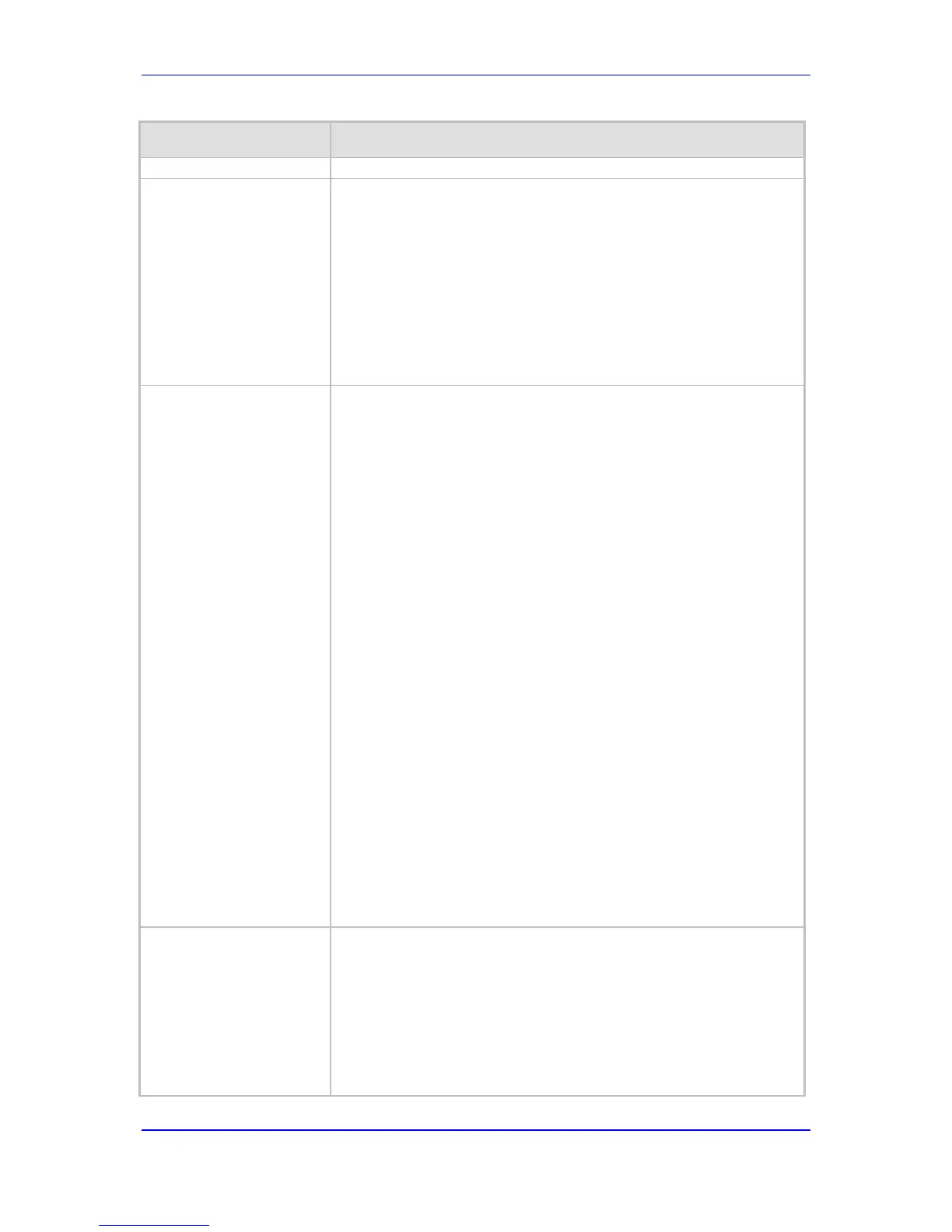Web/EMS: Enable Caller
ID
CLI: enable-caller-id
[EnableCallerID]
Enables Caller ID.
[0] Disable (default)
[1] Enable
If the Caller ID service is enabled, then for FXS interfaces, calling
number and Display text (from IP) are sent to the device's port.
For FXO interfaces, the Caller ID signal is detected and sent to IP in
the SIP INVITE message (as 'Display' element).
For information on the Caller ID table, see Configuring Caller Display
Information on page 404.
To disable/enable caller ID generation per port, see Configuring Call
Forward on page 405.
Web: Caller ID Type
EMS: Caller id Types
CLI: caller-ID-type
[CallerIDType]
Determines the standard used for detection (FXO) and generation
(FXS) of Caller ID, and detection (FXO) / generation (FXS) of MWI
(when specified) signals:
[0] Standard Bellcore = (Default) Caller ID and MWI
[1] Standard ETSI = Caller ID and MWI
[2] Standard NTT
[4] Standard BT = Britain
[16] Standard DTMF Based ETSI
[17] Standard Denmark = Caller ID and MWI
[18] Standard India
[19] Standard Brazil
Notes:
Typically, the Caller ID signals are generated/detected between the
first and second rings. However, sometimes the Caller ID is
detected before the first ring signal. In such a scenario, set the
RingsBeforeCallerID parameter to 0.
Caller ID detection for Britain [4] is not supported on the device’s
FXO ports. Only FXS ports can generate the Britain [4] Caller ID.
To select the Bellcore Caller ID sub standard, use the
BellcoreCallerIDTypeOneSubStandard parameter. To select the
ETSI Caller ID substandard, use the
ETSICallerIDTypeOneSubStandard parameter.
To select the Bellcore MWI sub standard, use the
BellcoreVMWITypeOneStandard parameter. To select the ETSI
MWI sub standard, use the ETSIVMWITypeOneStandard
parameter.
If you define Caller ID Type as NTT [2], you need to define the NTT
DID signaling form (FSK or DTMF) using the
NTTDIDSignallingForm parameter.
INVITE messages to FXS Caller ID first digit.
[0] Disable (default)
[1] Enable
When this parameter is enabled, the device sends the Caller ID
number (calling number) with the cpc code (received in the SIP INVITE
message) to the device's FXS port. The cpc code is added as a prefix
to the caller ID (after IP-to-Tel calling number manipulation). For

